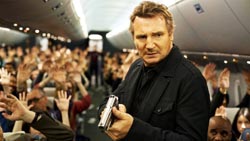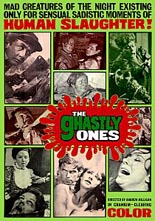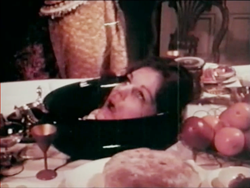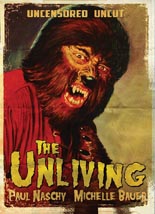
 Officially or not, The Unliving (aka Tomb of the Werewolf, in a shorter cut) is the 12th and final entry in the cycle of films starring Spanish-horror icon Paul Naschy as the lycanthropic Count Waldemar Daninsky. We say “or not” because Naschy neither wrote nor directed it. Hell — and this is not a complaint — he’s hardly in it!
Officially or not, The Unliving (aka Tomb of the Werewolf, in a shorter cut) is the 12th and final entry in the cycle of films starring Spanish-horror icon Paul Naschy as the lycanthropic Count Waldemar Daninsky. We say “or not” because Naschy neither wrote nor directed it. Hell — and this is not a complaint — he’s hardly in it!
In the creative mitts of B-movie auteur Fred Olen Ray (Bikini Drive-In), the sequel is also the only one of the wild bunch — among them, The Werewolf vs. the Vampire Woman and Frankenstein’s Bloody Terror — to be most interested in a bodily fluid that’s not colored red.
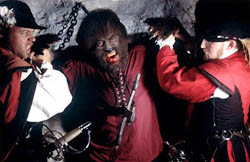 In present day, sole Waldemar descendant Richard Daninsky (Jay Richardson, Hollywood Chainsaw Hookers) is anxious to find the treasure rumored to be buried in the count’s castle. To do so, he hires a psychic investigator (Stephanie Bentley, Rapid Eye Movement) and, to document it all, the crew of the investigative TV series Current Mysteries, whose host (Ulli Lommel regular Danielle Petty, Diary of a Cannibal) is slappin’ skin with her himbo producer (Leland Jay, reunited with Olen Ray after 2003’s Bikini Airways).
In present day, sole Waldemar descendant Richard Daninsky (Jay Richardson, Hollywood Chainsaw Hookers) is anxious to find the treasure rumored to be buried in the count’s castle. To do so, he hires a psychic investigator (Stephanie Bentley, Rapid Eye Movement) and, to document it all, the crew of the investigative TV series Current Mysteries, whose host (Ulli Lommel regular Danielle Petty, Diary of a Cannibal) is slappin’ skin with her himbo producer (Leland Jay, reunited with Olen Ray after 2003’s Bikini Airways).
Unbeknownst to all, the caretaker of the Daninsky castle is actually 17th-century blood-bather Countess Elizabeth Bathory (Michelle Bauer, Evil Toons). Down in its catacombs, she tricks Richard into reviving Waldemar’s skeletal corpse, thus kick-starting a reign of nighttime terror throughout the village as the ol’ count goes loco in werewolf form.
Then five years away from death, Naschy appears awfully (and sadly) frail and slow. The poor guy can’t catch a break onscreen, either, because when he’s not sporting a horrid mullet that makes him look like a pudgier version of Dante from Clerks, he’s hidden behind a five-and-dime werewolf mask seemingly borrowed from a box in Michael Landon’s garage. (I Was a Late-in-Life Werewolf, anyone?) Naturally, when the hirsute creature runs around, it’s not Naschy doing the running.
That Naschy appears in The Unliving at all is reason enough for his fans to watch, although they should temper their expectations that this Daninsky outing feels like it tonally belongs with the others; it does not. As anyone familiar with the Olen Ray oeuvre knows, pure horror is not his thing; intentionally campy homages to pure horror are. Disembowelments are present, but they clearly take a backseat to four- and five-minute sex scenes. Fred’s films are parties, and only certain people fit in. To be one of them, know before crossing the threshold that he keeps the budgets low, the atmosphere light and the ladies’ chests ample and gelatinous. —Rod Lott

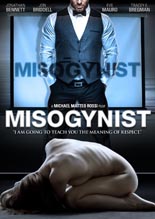
 Not every movie dares open with a quote from 18th-century moralist Samuel Johnson. (Then again, I don’t watch the History channel.) Michael Matteo Rossi’s
Not every movie dares open with a quote from 18th-century moralist Samuel Johnson. (Then again, I don’t watch the History channel.) Michael Matteo Rossi’s 
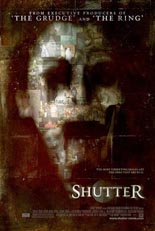
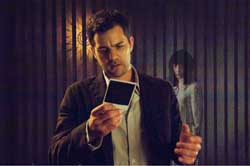
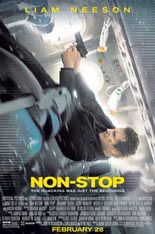
 At least at press time,
At least at press time, 